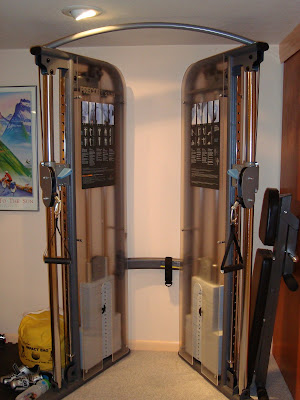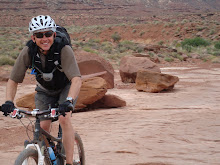This is not an entry about domestic violence. Far from it. It is a story of cooperation and fierce domestic competition. Friendly competition is a powerful motivator. Not-so-friendly competition is even more powerful!
Phil is amazingly supportive of me and my cycling adventures – in fact, one of our infrequent fights (or “discussions” in our outside voices, if you prefer) was about Phil’s habit of bragging about my cycling accomplishments to his friends and acquaintances, which causes me lots of embarrassment and discomfort.
Nevertheless . . . I do hold the Family Record times for the Mt Evans Hill Climb and Leadville 100 Mountain Bike races. [I’m just sayin’ . . .]
Phil is turning 50 this year. His mid-life crisis is not following the well-trod path – no hair implants, no Harley Davidson motorcycle purchases, no buxom blondes in foreign convertibles.
Instead, he wants to have his best cycling season ever. How to measure that? His goal is to beat me in both the Mt Evans Hill Climb and at Leadville. And I want him to. Really, I do. But as Lance Armstrong once famously said after a brutally difficult race from Bourg d'Oisans to Le Grand Bornand – no gifts.
If Phil wants the bragging rights, he’s going to have to earn them. So, he has been quite focused during our workouts and is being really meticulous with his diet. Just in case those two elements are not enough, he has also made a technology upgrade. Phil took delivery of a Sampson Diablo road bike this morning.

[Eric Sampson - owner of Sampson Cycling and bike builder, with Phil]
The tech specs are as follows –Campy Record 11 speed [12 – 27]
with a compact crankset [50/34]
Wheels are Hed Ardennes

The saddle is a Sampson model that Eric highly recommended (Phil broke it in with a 60 mile ride today and said it felt great.)
Campy record brakes

The gauntlet has been thrown. Time will tell if the Diablo is a Wife Beater. I’m ready to defend my record – may the cyclist who wants it most win!
 The maiden voyage
The maiden voyage






 Phil also uses rollers to improve his balance, pedal stroke and perform low intensity recovery workouts. Rollers scare the bejeebers out of me – I see them as a really neat way to break a collarbone.
Phil also uses rollers to improve his balance, pedal stroke and perform low intensity recovery workouts. Rollers scare the bejeebers out of me – I see them as a really neat way to break a collarbone.



 We find we can do a wide variety of exercises with this equipment.
We find we can do a wide variety of exercises with this equipment.










 Riding in the mountains at this time of year presents special challenges when selecting gear. You need to be a little bit cool when you head out, because you heat up dramatically while climbing. If you are warm when you start riding, you'll overheat and sweat too much. Then the descent is bonechilling due to your wet clothes. So, we rode up in shirt sleeves (2 layers)and bundled up for the ride down.
Riding in the mountains at this time of year presents special challenges when selecting gear. You need to be a little bit cool when you head out, because you heat up dramatically while climbing. If you are warm when you start riding, you'll overheat and sweat too much. Then the descent is bonechilling due to your wet clothes. So, we rode up in shirt sleeves (2 layers)and bundled up for the ride down.
